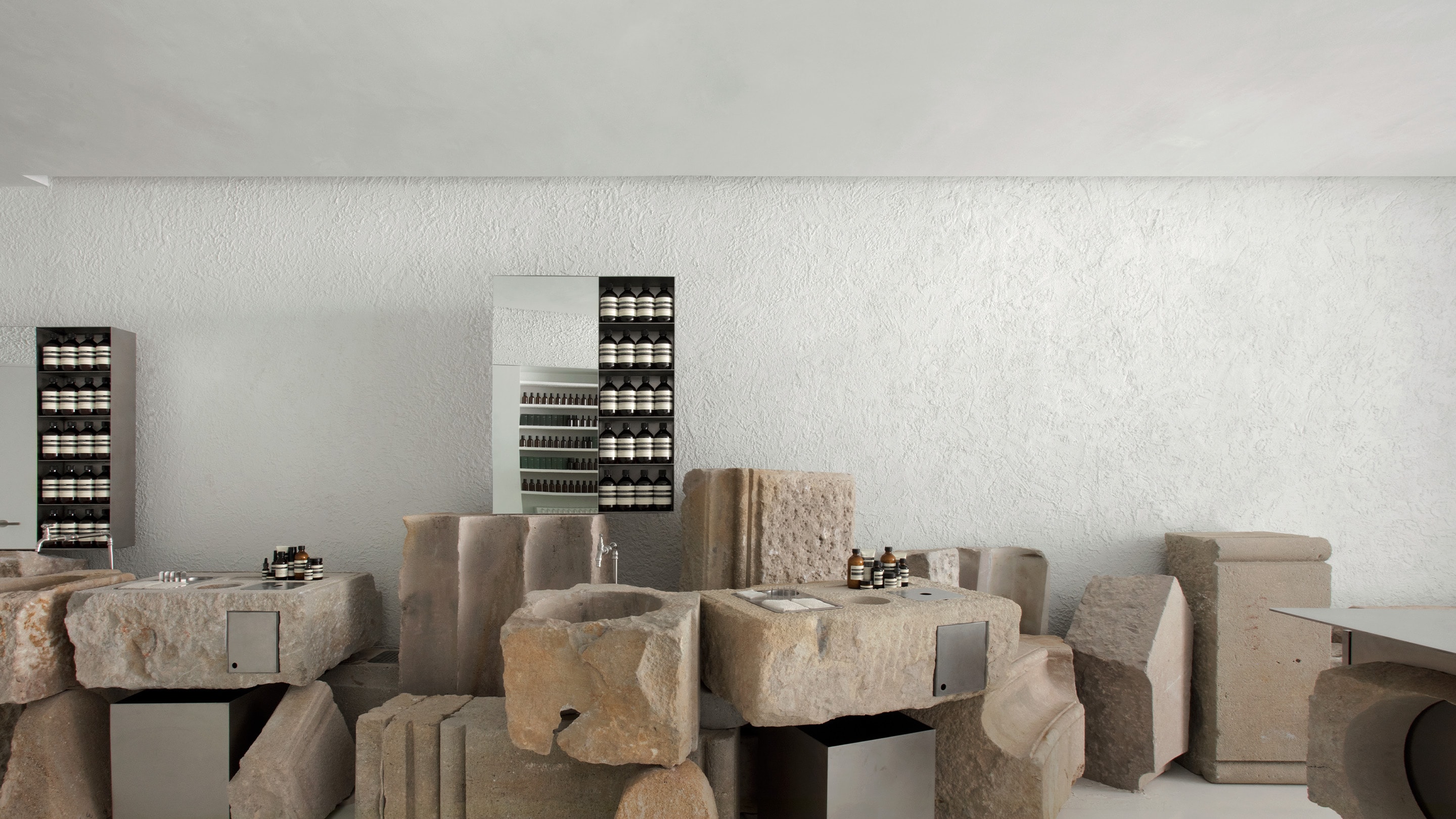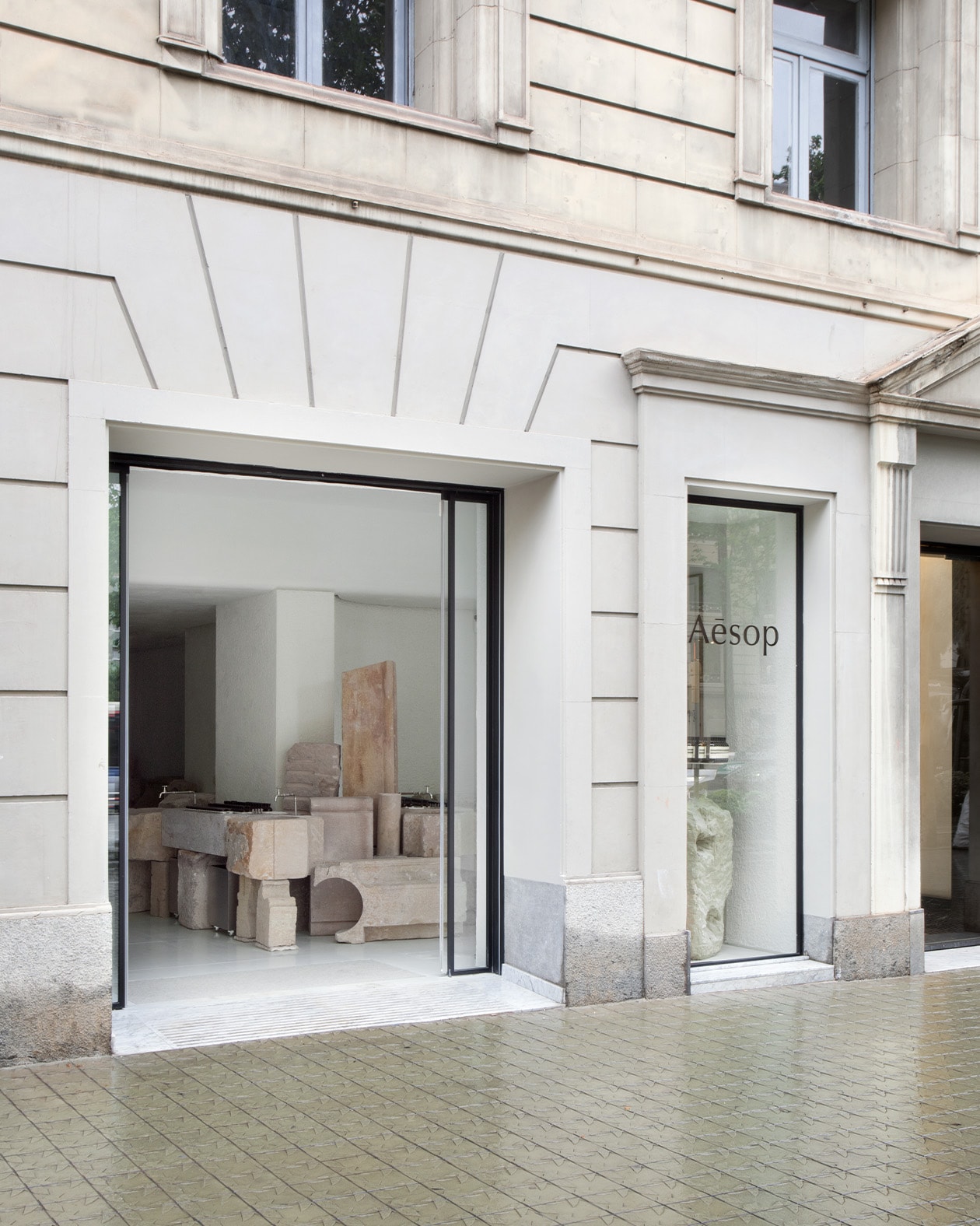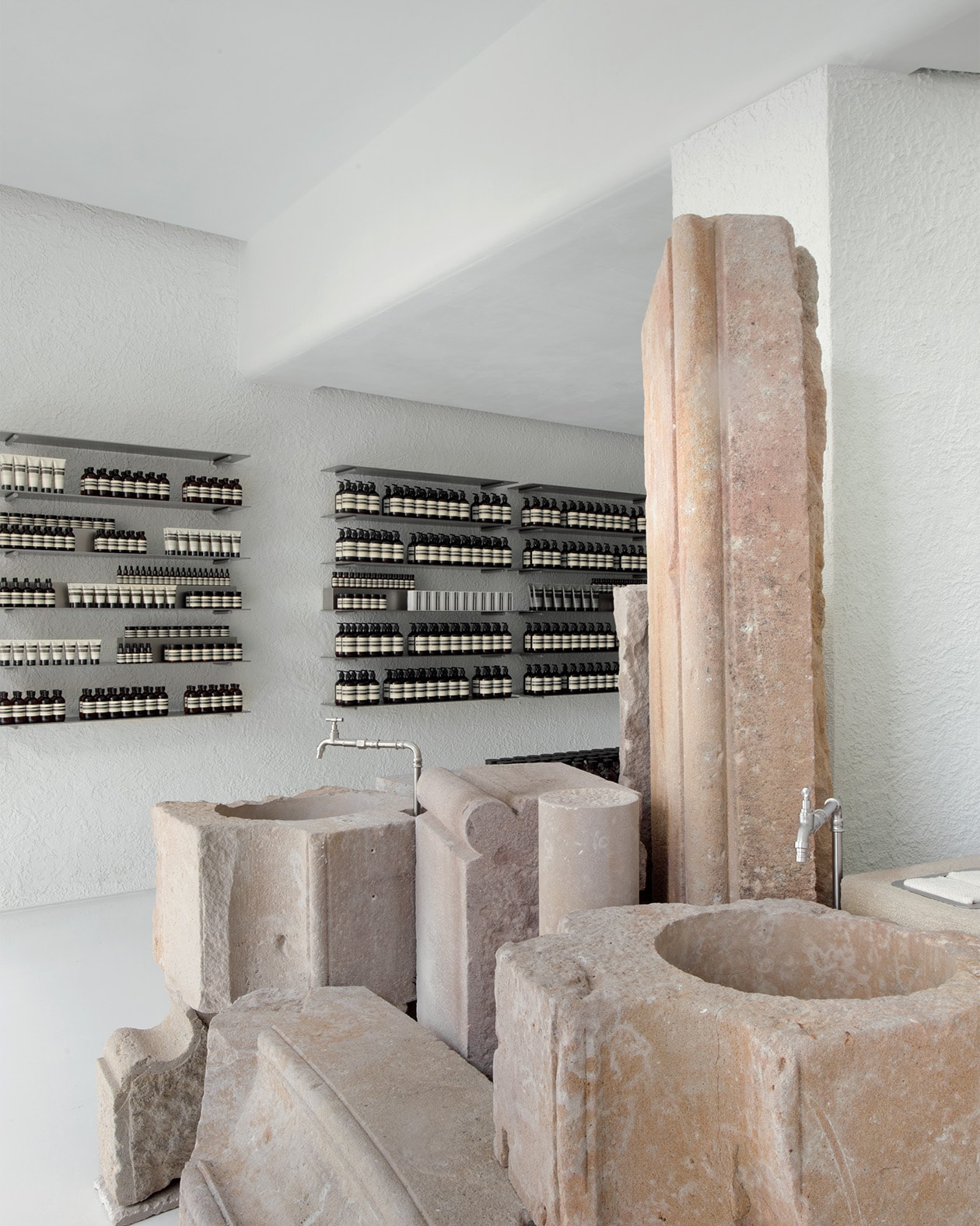Creative anastylosis: this is the term that Mesura Studio developed while working on our Avinguda Diagonal store in Barcelona. Anastylosis is a term that describes the architectural conservation of ancient monuments by reassembling their original pieces as precisely as possible; “creative” because the purpose in this case was not to reconstruct but to craft a new structure from discarded stone. In this way, the conventional design process was reversed—instead of starting with an imagined form and materialising it, Mesura started with materials and reimagined what they could become.
With the intention of reusing local materials, the team approached the Barbany family of master stonemasons, who have worked on the city’s edifices and monuments for more than 130 years. Many of these buildings are made of Montjuïc stone, which was extracted from the eponymous mountain just outside of Barcelona from the sixth century BC until the twentieth century and is renowned for its strength and exquisite colouring. As luck would have it, Barbany artesans had been storing remnants of the rock from demolished nineteenth century buildings in a defunct quarry for years. Mesura conducted pseudo archeology, discovering, under wild vegetation, pieces from Gothic quarter buildings, ancient fountains, arcades and plinths. Seventy-eight of these shards, carefully catalogued and assembled, now make up the installation within Aesop Diagonal.


